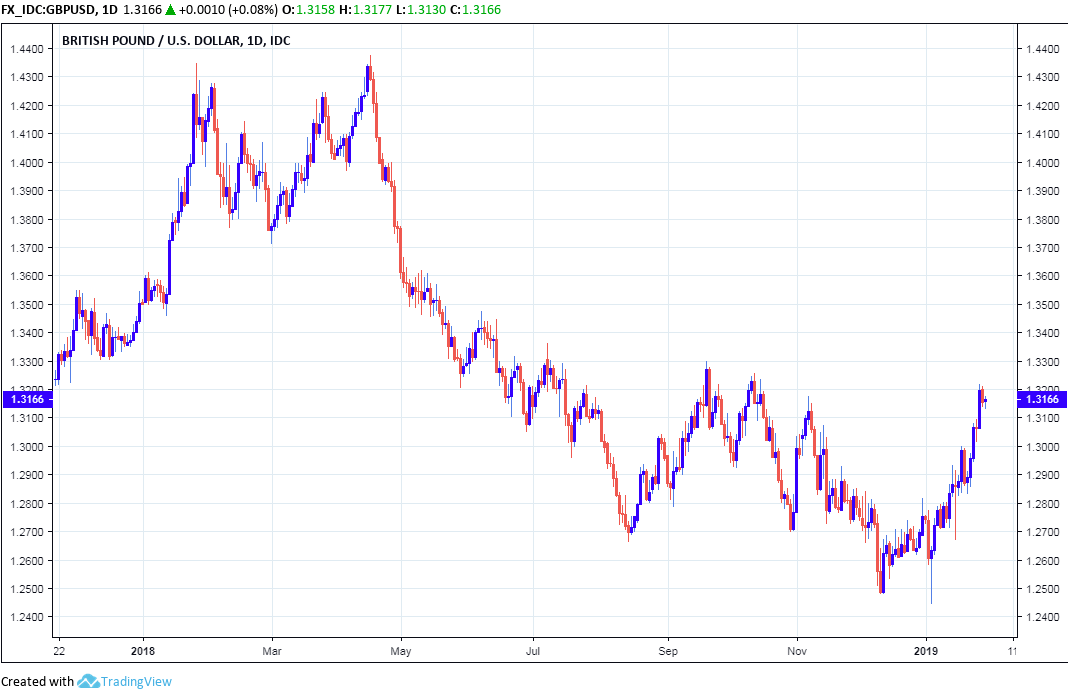U.S. Dollar to Remain Heavy as Another Shutdown and Fed Policy Change Loom
- Written by: James Skinner
-

© Nazli Sart, Adobe Stock
- USD to remain heavy as politics and Fed policy weigh.
- Government could close again in February says MUFG.
- And the Fed may be about to put another dent in USD.
The U.S. Dollar will remain heavy and continue to trade on its back foot over the coming weeks, according to analysts at MUFG, who say the prospect of a second policy change from the Federal Reserve (Fed) and another government shutdown will deter investors away from the Dollar.
President Donald Trump agreed on Friday to reopen the U.S. government after a month-long shutdown that resulted from a dispute between the White House and Congress over funding for a wall along the national border with Mexico, which has been approached by thousands of South American migrants seeking entry into the U.S. during recent months.
"We really have no choice but to build a powerful wall or steel barrier. If we don’t get a fair deal from Congress, the government will either shut down on February 15th, again, or I will use the powers afforded to me under the laws and the Constitution of the United States to address this emergency. We will have great security," President Trump told reporters last week.
Trump's decision has ended an economically damaging government shutdown that saw hundreds of thousands of federal workers go without pay but only on a temporary basis, until February 15, at which point the political conflict over funding for the border wall looks set to come to a head again.
The Congressional Budget Office said last week the shutdown has cost the economy some $11 billion already and that it could result in first-quarter GDP figures being around 0.1% lower than they otherwise would have.
And some analysts fear that the temporary nature of the agreement to reopen the government will not be enough to get federal employees and those companies that do business with government agencies spending again.
"President Trump’s decision to bring end to the government shutdown has brought little relief for the US dollar so far. Fears over another imminent shutdown could still be placing a dampener on the US dollar," warns Lee Hardman, a currency analyst at MUFG.

Above: U.S. Dollar index shown at daily intervals.
Under U.S. law if both houses of Congress and the President cannot agree a budget for the year ahead before the date when it is supposed to be agreed, the Federal government must close.
This means most federal agencies close and non-essential government workers are laid off until the deadlock is resolved, which is bad for the economy given the large share of GDP that is accounted for by government spending as well as spending by public sector employees.
"A further government shutdown would be an unwelcome development for the US economy especially at a time when financial markets have been signalling heightened downside risks to the outlook," Hardman says.
Uncertainty over whether the government will remain open comes at an awkward time for the U.S. Dollar, which has been hurt of late by a landmark shift in the Federal Reserve's interest rate stance and signs that another monetary policy pivot may now be in the cards.
The Wall Street Journal suggested last Friday the Federal Reserve could be close to ending the gradual run-down of a mammoth government bond portfolio acquired during the quantitative easing (QE) years.
"The report has increased speculation that the Fed’s updated balance sheet plans could take centre stage at this week’s FOMC meeting," says Hardman. "If confirmed, the developments are likely to be viewed as negative for the US dollar, and follows on the heels of the Fed’s recent signal to delay the pace of rate hikes."
Fed policymakers will provide markets with their latest official update on the bank's interest rate outlook this Wednesday at 19:00 London time.

Above: Pound-to-Dollar rate shown at daily intervals.
The Fed's balance sheet swelled from less than $1 trillion to more than $4 trillion between 2008 and 2015 as it bought huge piles of U.S. debt in an effort to lift inflation by stimulating the economy with lower market-based interest rates.
It ended QE a long time ago but it wasn't until the middle of 2017 the central bank stopped reinvesting the money it gets from the federal government each time a bond falls due. Those earlier reinvestments had ensured a steady supply of Dollars was drip fed into the U.S. and international financial system.
However, the decision to stop reinvesting the proceeds of maturing bonds has since created a shortage of U.S. Dollars on international markets. That, much like the Fed's other interest rate policies, has had far-reaching consequences for economies and currencies the world over in the last year or more.
So much so the bank suggested in January it won't raise its interest rate again until it can gauge the true health of the global economy and impact further policy moves might have on it. This was after it raised U.S. rates four times in 2018, taking the Fed Funds rate up to 2.5%.
"Financial market participants would be reassured by Fed plans for a larger balance and any signal that they are willing to slow the pace of balance sheet run off," Hardman says. "It would support our outlook for a weaker US dollar in the year ahead."
Hardman and the MUFG team forecast that a slower Federal Reserve will see the U.S. Dollar depreciate broadly in 2019, enabling the Pound-to-Dollar rate to rise from 1.31 Tuesday to 1.4350 by year-end, while taking the Euro-to-Dollar rate up from 1.14 Tuesday to 1.22 by the end of December.
Time to move your money? Get 3-5% more currency than your bank would offer by using the services of foreign exchange specialists at RationalFX. A specialist broker can deliver you an exchange rate closer to the real market rate, thereby saving you substantial quantities of currency. Find out more here.





